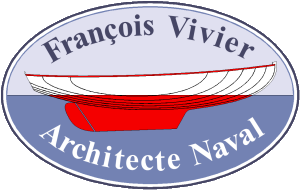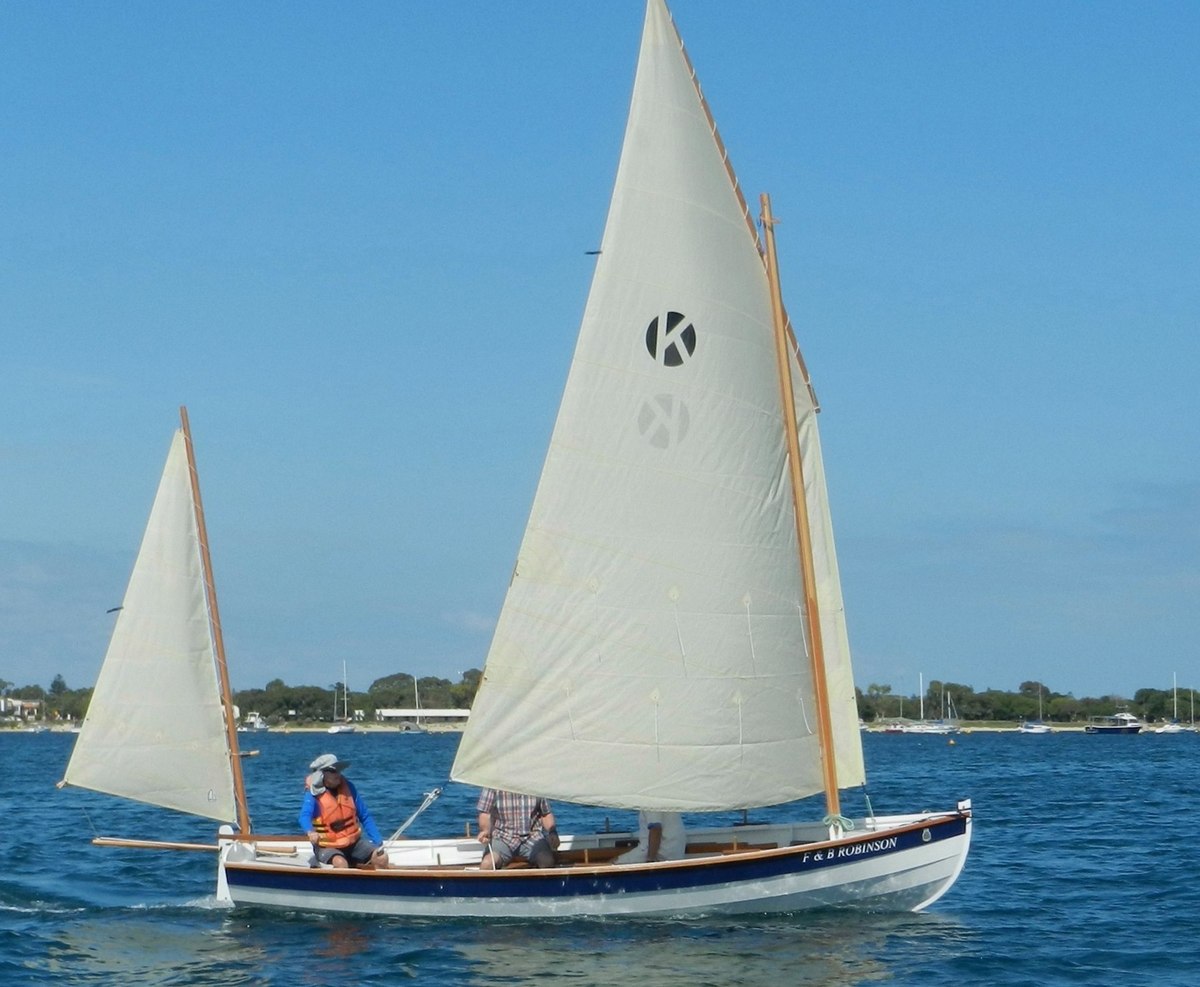A sail & oar dinghy for team crew
| Hull length / waterline | 5.70 / 5.30 m | Sail area | 15 m² |
| Breadth / waterline | 1.80 / 1.34 m | Outboard motor | 6 ch |
| Draught | 0.24 / 0.98 m | Design category / Crew | C6 / D7 |
| Light weight (including rig) | 270 kg | Building time | 400 hours |
There are two categories of sail and oar boats. One is made of small dinghies, from 12 to 17 feet, usually with two thwarts / two rowers, as many of my designs. The other category is boats for team crew, with more thwarts, mostly intended for youth organizations, see scouts, clubs, etc… I have already designed several “team boats”, in particular Yole de l’Odet (6.8 m, 3-thwarts) and Yole Morbihan (8 m, 3-thwarts). Kernic intends to be such a team sail and oar dinghy for a crew up to 7, but light, simple and small enough, in order to be easy to store, to trail and to maintain.
In 2015, Tony O’Connor, who builds boats and kits to my designs at O’Connor Wood Boats near Perth in Australia, had an inquiry for such a boat. This was the opportunity to give shape to my idea. The request came from both sea scouts and a cadets organization led by retired navy personnel. They ordered four boats, three as rowing boats and one for sail and oar. O’Connor Wooden Boats built the hulls and all the finishing work was done by a team of volunteers. Kernic was born
Kernic has a transom stern, allowing a moderate length, 5.7 m, in order to be stored in a garage. The hull lines are drawn to get a good compromise under oars and under sail, with a narrow waterline beam and a V shaped transom. Kernic is simple, light and cost-effective. For example, there is no floor-boards, the lower part of the hull inside is simply covered with a non-slip paint. The construction relies on a CNC plywood kits. The kit includes a building jig, hull planking with finger joints, and also some parts as the mizzen mast box and the footsteps racks. The kit ensures that all components go together in exactly the right places.
The hull is designed with a flat bottom (sole) which dispensed with the need for a keel. Sole and garboards, made of 9 mm marine ply, are assembled using the stitch and tape method. They are fully sheathed outside for better abrasion resistance. The upper planks are clinker built in 6 mm plywood. Frames are made of 15 mm plywood parts, including an arrangement for stowing the oars under the side seats. Timber trims cover the visible plywood edges.
Due to the 3-thwarts arrangement, a catboat or sloop rig would lead to a more complicated structure as the masts would need to be stepped between the thwarts. Therefore, we preferred a lug yawl rig. This rig allows keeping the mizzen up when rowing to stabilize the boat. The mizzen mast is stepped in a box integrated into the transom (and drained through the transom). The mainmast is stepped just aft of the fore buoyancy compartment and can be stowed in the hull when rowing. The mainsail is boomless.
The boat is rowed with 4 rowers / 4 oars: Two rowers side by side on the midships thwart, one on the other thwarts. Oars have all the same size, 3.1 m long, and may be easily made by young builders with laminated plywood blades. The transom allows fitting an outboard, as it could be useful to have one boat in a fleet with an outboard to ensure safety. Buoyancy compartments are located at both ends to make recovery as easy as possible.
After launching, the rowing versions went through a series of rowing drills with different seating and oars positions. Tony O’Connor was happy to say that they have been delighted with her handling, speed and stability.
In April 2017, the sailing version was launched and Tony send me some pictures with the following comments: “she sails really fast, the helm was very responsive and light, we had about 12 knots of wind with full sail and she went well, really fast too, It is a pity she is going away as I would have liked to sail her a bit more and get some people I know to have a sail because I think she would be an ideal raid type boat, I also rowed the boat by myself and she really rows well.”



Reviews
There are no reviews yet.